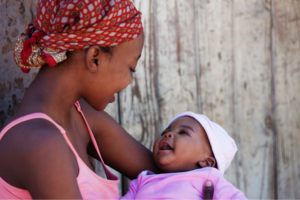UN population scenarios: How might changes in fertility shape our demographic future?
Written by Olivia Nater | Published: September 17, 2024
The United Nations Population Division releases new population projections every 2-3 years. The latest projections were published in July this year. Alongside the standard projections which are largely based on historical trends, the UN demographers also produce a series of alternative scenarios to demonstrate how specific deviations in fertility, mortality, and migration could affect population trajectories up to 2100.
These scenarios provide powerful demonstrations of how small changes in fertility rates can have very large impacts on future population size. They include a “low fertility” scenario in which every other woman has one fewer child (or 0.5 fewer children per woman) than expected under the most likely (“median”) projection, and a “high fertility” scenario in which every other woman has one more child (or 0.5 more children per woman) than expected.
Three new scenarios, representing a phase out of teen births, were added this year. The first, “no fertility below age 18 years,” assumes zero births to girls under 18 years old starting immediately. The second, “accelerated decline of adolescent birth rate (ABR),” assumes fertility rates for women and girls under 20 decline by 20 percent annually, beginning in 2024, until the adolescent birth rate falls below 10 births per thousand women aged 15 to 19 years. The third, “accelerated decline of ABR with recovery,” assumes the same rate of fertility decline as the second scenario but also that half of the fertility reduction in the 15-19 age group is recovered a decade later, when the women are 25-29. In other words, childbearing is postponed in this scenario.
Let’s take a look at how these different scenarios influence population size in 2030, 2050, and 2100.
1) Low fertility
 Arguably the most optimistic scenario (at least from the point of view of organizations seeking to achieve a more sustainable population size) is the low fertility scenario. But it serves more as a hypothetical thought experiment than a realistic scenario — it assumes the reduction in fertility goes into effect immediately, with our fertility rate dropping from its current level of 2.25 births per woman to just 2.00, and continuing to decline until it reaches 1.36 in 2100. Demographic momentum means our global population would initially keep growing, from today’s 8.2 billion to 8.5 billion in 2030 and 8.9 billion in 2050. By 2100, however, the population would have begun declining, and there would be just under 7 billion people on Earth. This is about the level we had in 2010, which is a sobering fact — even this rapid fertility decline would not allow us to return to a much more sustainable population size this century.
Arguably the most optimistic scenario (at least from the point of view of organizations seeking to achieve a more sustainable population size) is the low fertility scenario. But it serves more as a hypothetical thought experiment than a realistic scenario — it assumes the reduction in fertility goes into effect immediately, with our fertility rate dropping from its current level of 2.25 births per woman to just 2.00, and continuing to decline until it reaches 1.36 in 2100. Demographic momentum means our global population would initially keep growing, from today’s 8.2 billion to 8.5 billion in 2030 and 8.9 billion in 2050. By 2100, however, the population would have begun declining, and there would be just under 7 billion people on Earth. This is about the level we had in 2010, which is a sobering fact — even this rapid fertility decline would not allow us to return to a much more sustainable population size this century.
Some demographers think this type of rapid decline is not completely out of reach, however. Researchers at the Institute of Health Metrics and Evaluation (IHME) published a set of population projections in 2020 that included a scenario modeling what would happen if the Sustainable Development Goal (SDG) targets related to education and family planning were met by their 2030 deadline. According to the researchers, this would lead to a population size of just 6.3 billion by 2100. Again, this is an overly optimistic scenario (we are very far off track for meeting the SDGs by 2030) but it demonstrates the power of globally beneficial population solutions. Continued fertility decline via the removal of barriers to family planning and education is absolutely worth pursuing — the more we invest in these solutions, the faster our progress will be.
2) High fertility
Just like the low fertility scenario, the high fertility one assumes an instantaneous increase in the global fertility rate, so is not realistic. It assumes a rate of 2.50 in 2024 and a reduction to 2.32 by century’s end. This scenario would result in a population size of 8.7 billion by 2030 — not a huge difference to the low fertility scenario. The difference rapidly expands as we approach the second half of the century, however — in 2050, there would already be 10.4 billion people on Earth (higher than the 10.3 billion peak we’re on track for, according to the UN’s median scenario), and by 2100, our population size would be a staggering 14.4 billion — more than twice as large as in the low scenario.
An increase in the global fertility rate is not very likely in light of current trends — all around the world, as women gain better access to reproductive health and rights, education, and jobs, fertility rates decline. The only countries in which the UN demographers project increasing fertility rates this century are those that currently have “ultra-low” fertility (fewer than 1.4 births per woman). For example, in South Korea, which has the world’s lowest fertility rate (at just 0.72 according to the Korean Statistical Information Service), women face sexist norms and expectations that place unfair burdens and penalties on mothers. Addressing these issues might lead to (at least small) fertility increases in this category of countries — for South Korea, the UN median projection forecasts an increase to 1.30 births per woman by 2100.
3) Ending teen births
 Let’s look at what would happen if we only tackled adolescent births. The “no fertility below age 18 years” scenario is also not realistic in that it assumes births to girls under 18 years old stop immediately — there are sadly many pregnant teens who will give birth this year. According to 2019 estimates, every year, 21 million girls aged 15-19 years in developing countries become pregnant and approximately 12 million of them give birth. Child marriage is a major driver of teen pregnancy — 90 percent of births to teen girls occur within the context of marriage.
Let’s look at what would happen if we only tackled adolescent births. The “no fertility below age 18 years” scenario is also not realistic in that it assumes births to girls under 18 years old stop immediately — there are sadly many pregnant teens who will give birth this year. According to 2019 estimates, every year, 21 million girls aged 15-19 years in developing countries become pregnant and approximately 12 million of them give birth. Child marriage is a major driver of teen pregnancy — 90 percent of births to teen girls occur within the context of marriage.
In all three scenarios representing a phase out of teen births, our population never reaches 10 billion. In the “no fertility below age 18 years” scenario, the 2024 fertility rate is 2.18, and drops to 1.81 by 2100. Population increases to 8.5 billion in 2030, to 9.6 billion in 2050, peaks just below 10 billion in 2078, and declines to 9.8 billion by the end of the century.
While there is unfortunately no magic “off” switch for teen births, a crackdown on child marriage and gender-based violence, alongside comprehensive sex education and easy access to contraception and abortion for everyone — which are all morally essential in their own right — would help us get closer to this scenario.
The “accelerated decline of adolescent birth rate (ABR)” is arguably a more realistic scenario demonstrating what could happen if we implemented the measures above. In this scenario, the 2024 fertility rate is 2.21 and declines to 1.79 in 2100. This would result in a population size of 8.5 billion in 2030, 9.5 in 2050, a peak of just under 9.8 in 2073, and a decline to 9.4 billion in 2100. In the “recovery” scenario, the overall decline in fertility rate is smaller, resulting in a 2100 population size of 9.7 billion.
Our future is in our hands
We must urgently pursue empowering population solutions — these scenarios make it very clear that the longer we fail to act, the more women and girls will unnecessarily suffer, and the further a sustainable global population size is pushed out of reach, which has major implications for all forms of life on this planet.

